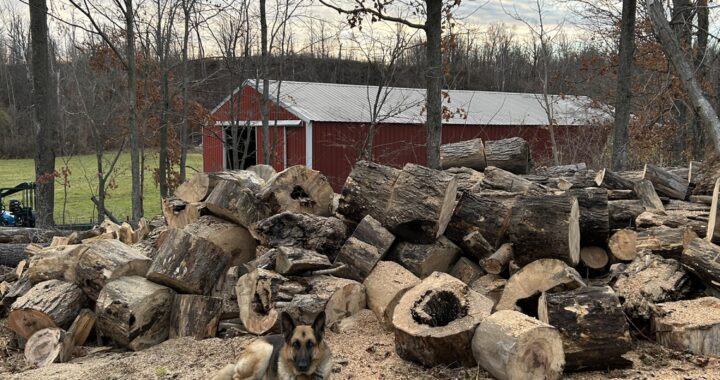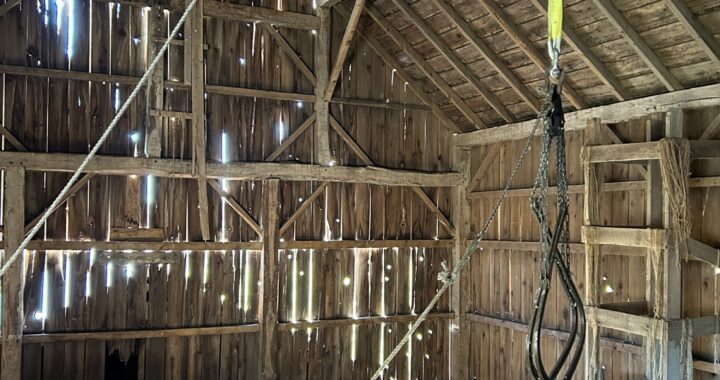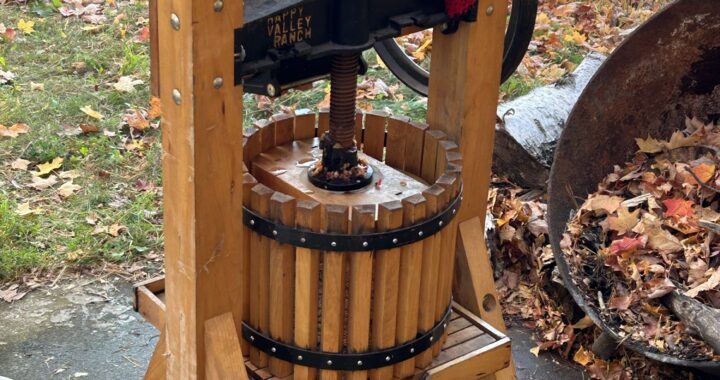Our first snow yesterday. It didn’t amount to much though. The day started cool and dark as daylight grows less while autumn advances. It’s that wake-up time when you assess your preparedness for winter if you are a veteran of seasons here in the St. Lawrence valley.It’s coming and small wisps of arctic air sometimes arrive from the north.They herald a time to come but autumn prevails for the moment.
November is a time when beauty in nature can be a little harder to see sometimes. It exists though. It’s a good idea to identify better with our senses then. Five obvious and one not. I feel sound can become more important to recognize as part of the overall outdoor experience once the colorful foliage drops. In the open forest devoid of leaves sound travels far but muffled underfoot when the ground is thick with wet leaves. A brown blanket with life protected underneath that we don’t often notice.Only the oaks have retained their leaves at this point. Brown and lifeless they persist in clinging to the branches. A day of work at the farm property provided special observations yesterday that embody rural heritage and connection.
Mid November finds me playing catch up with a firewood order. It’s been a warm fall and I haven’t felt the drive to work on it. But the cooler days recently have awakened the harvest mentality. Hunter and gatherer? Perhaps.I have been stocking up the warehouse log landing adjacent to the main farm meadow where we put up most of our firewood orders due to its convenience in getting it trucked off the farm. I have focusing on an area I call the upper landing. Once a portion of our sugarbush it’s in tough condition after the 2017 die off. I stockpiled a decent amount of logs there a couple years ago intending to get them cut up last fall. But we had too many other logs down on the warehouse landing ( from other die off) to block up so with the exception of a few I had skidded down fall there was quite a bit of still needing to be salvaged. Maple rots quickly and can’t be left on the ground for too long. Good and bad at the same time. Good for getting the forest rejuvenated but bad for salvaging firewood.The logs of the upper landing are getting questionable in their quality so I decided it was now or never to block them up. I had expended a lot of energy getting them stocked in the first place. They are turning out to be a mixed bag. Some good enough for the firewood order and the rest to be used at Camp Edith or turned into sugar wood. I also turned my attention onto a dead standing maple and a recent blowdown. It’s a never ending challenge to keep up with the aftermath of the die off and wind damage. We do the best we can.
So that’s the background on recent farm property activity. The annual firewood harvest. Known to me as “The Grand Harvest”. I stole the name from a brand of hay baler twine that we used to purchase years ago. I have spent decades of my life and countless hours putting up firewood each autumn. I write of my years of woods craft in my blog series titled “The Run Of The Mill”. Check them out. I try to avoid redundancy here but life follows seasons and I write in the context of present season much of the time. It’s where I live in the now. Powerful and romantic to me in its passage. So the stories follow the seasons. There is a peaceful grounding in following nature through the seasons. I write of it often.
As November advances brown seems to become the predominant color of the forest. The greens of the ground soon to be turned white with snow. It’s time for the other senses to step forward and revel in the moment. Sound especially! Decked out in my hearing protectors I don’t hear much while running the chainsaw on the landing. But when taking a break to refuel the chainsaw I heard a lot of things yesterday. Off in the distance an approaching flock of snow geese. Their southbound flight cries very different then their relatives the Canadian geese.Off in the distance I heard someone else running a chainsaw cutting wood most likely. As the day wound down I heard gunshots from time to time as hunters fired on unknown targets.High powered deer rifles not shotguns I knew from experience. The annual deer rut brings more deer activity to our region and the hunters use it to their advantage. Once an avid hunter I now simply take my gun out for a walk a few times each season. I do target shoot to keep my accuracy honed in just in case that special opportunity presents itself. But that’s a whole different story.
Birds provided much of the sound yesterday. While I was on break a croaking raven announced its presence as it headed to feed on a deer carcass someone had dumped on our property. Ethics run low sometimes in our neck of the woods. On a positive note the dumped deer carcass had drawn in a scavenging bald eagle that was now hanging around the farm. High in the sky above the meadow it glided on large wings and added to an already special day. The many dead maples of the farm have become a woodpecker sanctuary.Their drilling and tapping sounds come from all directions. Down from the ridges the raucous cries of the huge pileated woodpeckers hard at work mix with the tiny downy and hairy ones that hang around the landing. The pileated woodpeckers leave huge piles of chips below their targeted trees. It’s pretty obvious that many of these monster maples must soon topple over given their riddled trunks.On the landing cutting and splitting wood knocks many grubs and insects free from their inside hiding places. Nuthatches and tiny chickadees stay close too. Opportunity is not lost on them and I enjoy their company.
Scents abound on the log landing as well. Chainsaw gas fumes and hot chainsaw bar oil. The sweet odor of maple sap trapped in the salvaged logs of the former sugarbush. Not destined for the sugar house evaporator and sadly lost forever. There’s the scent of muddy tractor tires and diesel fuel. Rotting leaves and dead vegetation. The smell of ripped earth from the skidding of logs. The scent of my worn leather gloves and logger wedge bag strapped to my waist. And then my own scent. Sweat,soap, and challenged deodorant. Let’s not forget the scent of the dumped deer carcass where I found my strayed dog Gracie hard at work gnawing on some rather fragrant morsels.Gag reflex and I don’t have a weak stomach! Passed on lunch at that point! Nature doesn’t leave things around for long. Dead trees, dead flesh, and dead vegetation on its return trip back to the earth. Humbling and comfortable at the same time. Luckily the coyotes had found the deer carcass and eaten most of it in one night after it had sat for a few days. Nothing gets wasted in nature. Something to learn there.
November is always a time of discovery. Personal observation and reflection. My slightly older body these protests the heavy chainsaw by day’s end but obeys my mind’s commands and pushes through. The physical and mental states don’t always want to sync but luckily the mind wins for a time. There’s an energetic drive in the accomplishment of a huge pile of firewood blocks awaiting the wood splitter. The forest a little cleaner and the dead trees serving a purpose. Rural heritage runs strong on such occasions. Decades old and grounded in tradition and a sense of something much more. There is a safe sanctuary in the physical activities of the log landing. True grounding. It’s best not to let the mind wander when the hands are holding a throttled up chainsaw. I think that’s where peace exists sometimes. In simple task and toil. Answering that one would prove difficult to a bystander I suppose. In the use of the hands there is an extension of inner spirit and the feelings of connection to the land itself. Pretty heavy for just doing some firewood.
My body finally called the end of the landing. A look at the fading light over the top of ridge across the meadow spoke of the approaching darkness. I stashed the tractor and the gear in the warehouse then locked the doors on a productive day. I leaned on the car and realized it was silent. Nothing. Just the solid ground under my feet and drifting clouds above. A moment of silent solitude where I was totally alone and enjoying the silent solitude. Tomorrow would come and bring a fresh round of details. But this moment was mine with no distractions. And then it happened. The ringtone came. Not from my phone but high above. Geese in the distance and out of sight. The nighttime chill came on a small north born breeze and what I had predicted in the post called The Special Day washed over me. The rocky soil of the farm property heals and repairs. It always had even when I hadn’t learned to recognize it yet as a younger version of myself. Focus and purpose are reborn and come with silent energy. It’s all connected somehow. The words, the feelings, and the driving pulse of the season. The simplest days of November can be priceless when a brown and seemingly barren landscape is transformed into beauty that can’t be described. It must be lived in the now.✍️



